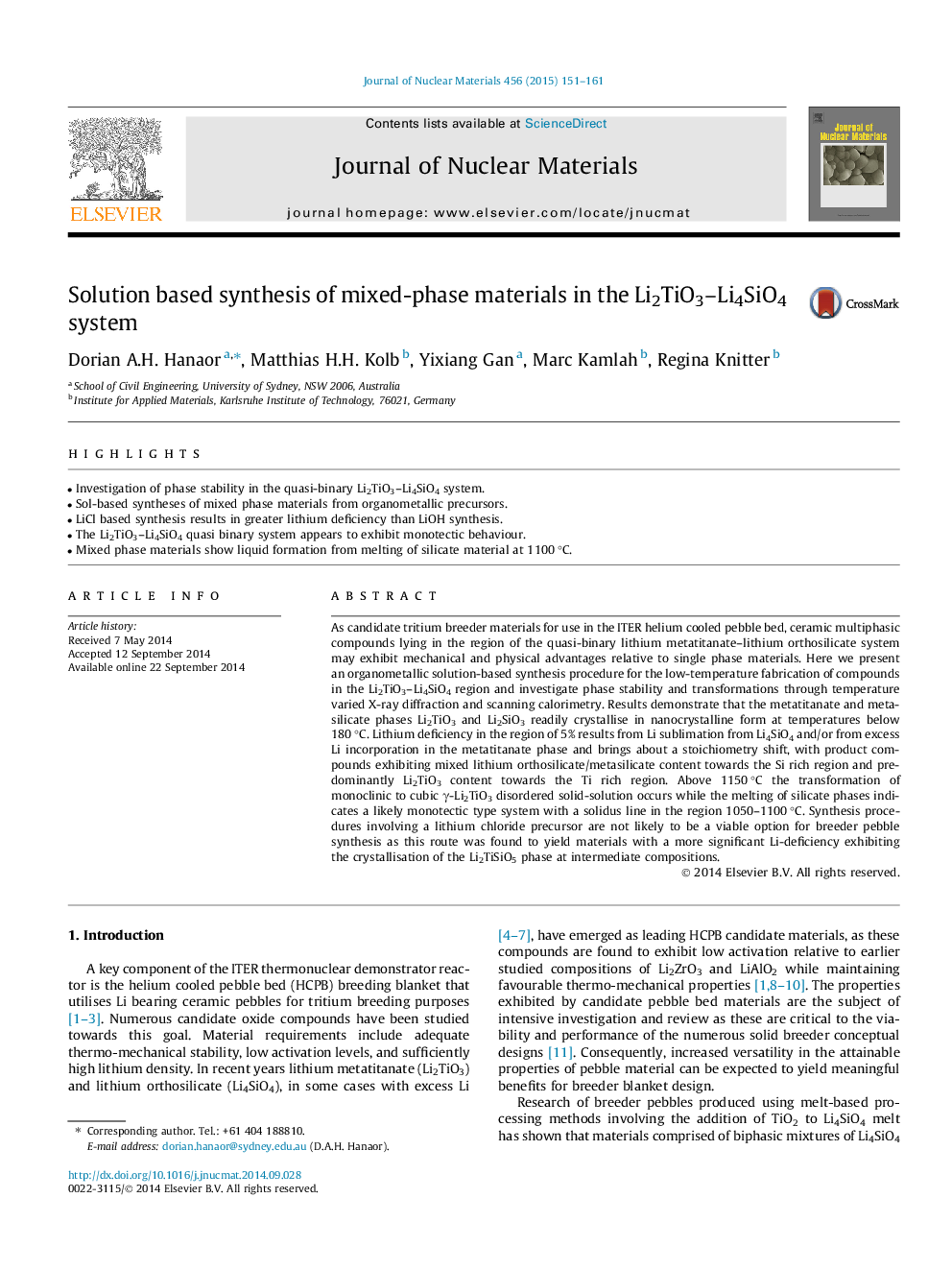| Article ID | Journal | Published Year | Pages | File Type |
|---|---|---|---|---|
| 7966875 | Journal of Nuclear Materials | 2015 | 11 Pages |
Abstract
As candidate tritium breeder materials for use in the ITER helium cooled pebble bed, ceramic multiphasic compounds lying in the region of the quasi-binary lithium metatitanate-lithium orthosilicate system may exhibit mechanical and physical advantages relative to single phase materials. Here we present an organometallic solution-based synthesis procedure for the low-temperature fabrication of compounds in the Li2TiO3-Li4SiO4 region and investigate phase stability and transformations through temperature varied X-ray diffraction and scanning calorimetry. Results demonstrate that the metatitanate and metasilicate phases Li2TiO3 and Li2SiO3 readily crystallise in nanocrystalline form at temperatures below 180 °C. Lithium deficiency in the region of 5% results from Li sublimation from Li4SiO4 and/or from excess Li incorporation in the metatitanate phase and brings about a stoichiometry shift, with product compounds exhibiting mixed lithium orthosilicate/metasilicate content towards the Si rich region and predominantly Li2TiO3 content towards the Ti rich region. Above 1150 °C the transformation of monoclinic to cubic γ-Li2TiO3 disordered solid-solution occurs while the melting of silicate phases indicates a likely monotectic type system with a solidus line in the region 1050-1100 °C. Synthesis procedures involving a lithium chloride precursor are not likely to be a viable option for breeder pebble synthesis as this route was found to yield materials with a more significant Li-deficiency exhibiting the crystallisation of the Li2TiSiO5 phase at intermediate compositions.
Related Topics
Physical Sciences and Engineering
Energy
Nuclear Energy and Engineering
Authors
Dorian A.H. Hanaor, Matthias H.H. Kolb, Yixiang Gan, Marc Kamlah, Regina Knitter,
